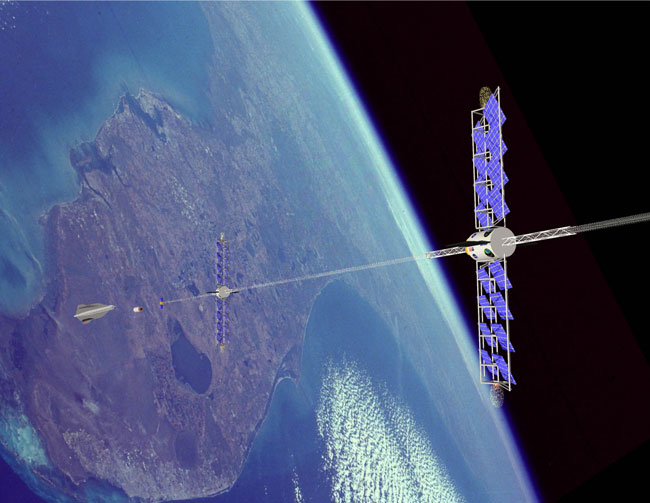Electrodynamic Tethers: Getting into the Swing
News
By
Bill Christensen
published

- An EDT can generate electric current flow towards the planet; this can provide enough electricity to run experiments on board a satellite; this also causes the tether to experience a force from the planet's magnetic field that is opposite the tether's direction of motion. In other words, it slows the EDT system down (produces drag), lowering the EDT's orbit.
- By adding a battery (or solar panel) to the EDT circuit, the induced current is overcome, reversing the current direction; the force experienced by the tether is now in the same direction as the EDT's motion. In other words, this produces thrust, raising its orbital attitude.
Get the Space.com Newsletter
Breaking space news, the latest updates on rocket launches, skywatching events and more!
Bill Christensen is the founder and editor of Technovelgy, a website dedicated to cataloguing the inventions, technology and ideas of science fiction writers. Bill is a dedicated reader of science fiction with a passion about science and the history of ideas. For 10 years, he worked as writer creating technical documentation for large companies such as Ford, Unisys and Northern Telecom and currently works to found and maintain large websites. You can see Bill's latest project on Twitter.
MORE FROM SPACE...
